Related Research Articles

Goldwyn Pictures Corporation was an American motion picture production company that operated from 1916 to 1924 when it was merged with two other production companies to form the major studio, Metro-Goldwyn-Mayer. It was founded on November 19, 1916, by Samuel Goldwyn, an executive at Lasky's Feature Play Company, and Broadway producer brothers Edgar and Archibald Selwyn, using an amalgamation of both last names to name the company.

James Cullen Landis was an American motion picture actor and director whose career began in the early years of the silent film era.

Buck Jones was an American actor, known for his work in many popular Western movies. In his early film appearances, he was credited as Charles Jones.

Robert G. Vignola was an Italian-American actor, screenwriter, and film director. A former stage actor, he appeared in many motion pictures produced by Kalem Company and later moved to directing, becoming one of the silent screen's most prolific directors. He directed a handful of films in the early years of talkies but his career essentially ended in the silent era.
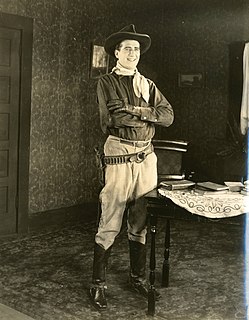
Lester H. Cuneo was an American stage and silent film actor. He began acting in live theatre while still in his teens.

Film Booking Offices of America (FBO), also known as FBO Pictures Corporation, was an American film studio of the silent era, a producer and distributor of mostly low-budget films. It was founded in 1920 as Robertson–Cole (U.S.), the American division of a British import–export company formed by the English-born Harry F. Robertson. Robertson-Cole bought the Hallmark Exchanges from Frank G. Hall in 1920. Exhibitors-Mutual/Hallmark had distributed Robertson-Cole product, and acquiring the exchanges gave them the right to distribute their own films plus Hall's product, with the exception of Charlie Chaplin reissues which he had the rights to.

Katherine Duffy, known professionally as Kate Price, was an Irish-American actress. She is known for playing the role of Mrs. Kelly in the comedy series The Cohens and Kellys, made by Universal Pictures between 1926 and 1932. Price appeared in 296 movies from 1910 to 1937.

Billy West was a film actor, producer, and director. Active during the silent film era, he is best known as a semi-successful Charlie Chaplin impersonator. Beyond acting, he also directed shorts in the 1910s and 20s, as well as produced films. West ultimately retired in 1935.

Gladys Hulette was an American silent film actress from Arcade, New York, United States. Her career began in the early years of silent movies and continued until the mid-1930s. She first performed on stage at the age of three and on screen when she was seven years old. Hulette was also a talented artist. Her mother was an opera star.
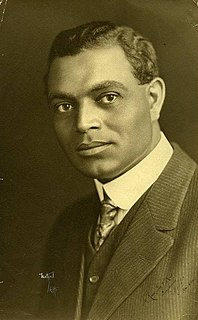
Noble Johnson, later known as Mark Noble, was an American actor and film producer. He appeared in films such as The Mummy (1932), The Most Dangerous Game (1932), King Kong (1933) and Son of Kong (1933).
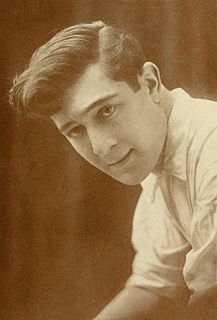
Hobart Henley was an American silent film actor, director, screenwriter and producer. He was involved in over 60 films either as an actor or director or both in his twenty-year career, between 1914 and 1934 when he retired from filmmaking.

Hunt Stromberg was a film producer during Hollywood's Golden Age. In a prolific 30-year career beginning in 1921, Stromberg produced, wrote, and directed some of Hollywood's most profitable and enduring films, including The Thin Man series, the Nelson Eddy/Jeanette MacDonald operettas, The Women, and The Great Ziegfeld, which won the Academy Award for Best Picture of 1936.

Bernard's Airport, also known as Bernard Airport, was a non-commercial airfield in Beaverton, Oregon, United States, from 1928 to 1969. In its early years, it was one of two private airports located in Beaverton, the other being Watts Field, about one-half mile to the south of Bernard's Airport. The Bernard Airport site was redeveloped in 1969 as "Bernard's Beaverton Mall", now known as Cedar Hills Crossing.
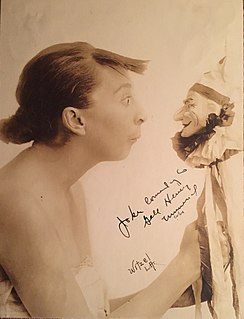
Gale Henry was an American film actress. A prominent comedian, she appeared in more than 230 films between 1914 and 1933.

Tiffany Pictures, which also became Tiffany-Stahl Productions for a time, was a Hollywood motion picture studio in operation from 1921 until 1932. It is considered a Poverty Row studio, whose films had lower budgets, lesser-known stars, and overall lower production values than major studios.

Edward Kline Lincoln was an American silent film actor and director. Lincoln appeared in over 65 silent films and was best known for movies like For the Freedom of the World (1917), The Light in the Dark (1922) and The Man of Courage (1922).
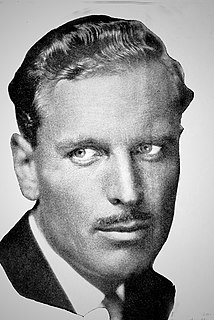
Alfred Emory Johnson was an American actor, director, producer, and writer. As a teenager, he started acting in silent films. Early in his career, Carl Laemmle chose Emory to become a Universal studio leading man. He also became part of one of the early Hollywood celebrity marriages when he wed Ella Hall.
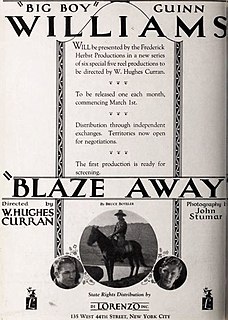
William Hughes Curran (1893-1940) was an American film director. He directed several Western films.

Emilie Johnson was a Swedish-American author, scenarioist, and movie producer. She was the mother of American actor, director, producer, and writer Emory Johnson. In 1912, Emory Johnson dropped out of college and embarked upon a career in the movie business, starting as an assistant camera operator at Essanay Studios.

Jane Jennings was an American actress known for playing older motherly characters. In a 1918 edition of Motion Picture News she is described as a sweet looking little woman. Famous Players was one of the studios where she worked. She is on the cover of the sheet music for That Wonderful Mother of Mine (1918). By the 1925 film Self Defense, she had played 178 mother roles in films.
References
- ↑ "Film Company Floated". (August 3, 1921). The Morning Oregonian, p. 11.
- ↑ Nelson, Don (March 30, 2008). "Of planes, trains, films and farms: Beaverton's past includes a movie studio, airport, rail to Portland and produce". The Sunday Oregonian . Retrieved December 11, 2013.
- 1 2 3 4 5 Mapes, Virginia (1993). "Chapter 15: Premium Picture Productions". Chakeipi ("the Place of the Beaver"): The History of Beaverton, Oregon. City of Beaverton. pp. 131–134. OCLC 28908244.
- ↑ The Fighting Romeo (1925) at IMDb